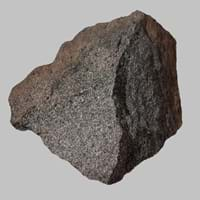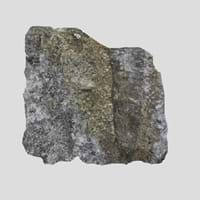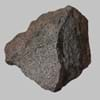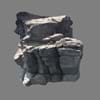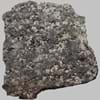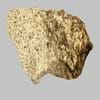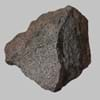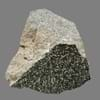Boninite and Marl
Definition
Definition
Boninite is a mafic extrusive rock which is high in magnesium and silica content, formed in fore-arc environments, typically during the early stages of subduction
Marl is an unconsolidated sedimentary rock consisting of clay and lime
History
Origin
Japan
Unknown
Discoverer
Unknown
Unknown
Etymology
From its occurrence in the Izu-Bonin arc south of Japan
From Old French marle, from Late Latin marglia
Class
Igneous Rocks
Sedimentary Rocks
Sub-Class
Durable Rock, Hard Rock
Durable Rock, Soft Rock
Family
Group
Volcanic
Not Applicable
Other Categories
Fine Grained Rock, Opaque Rock
Fine Grained Rock, Opaque Rock
Texture
Texture
Aphanitic to Porphyritic
Earthy
Color
Bluish - Grey, Brown, Colourless, Green, Grey
Beige, Brown, Green, Grey, White
Maintenance
Less
Less
Durability
Durable
Durable
Water Resistant
No
Yes
Scratch Resistant
Yes
No
Stain Resistant
Yes
No
Wind Resistant
Yes
No
Acid Resistant
No
No
Appearance
Dull and Soft
Rough and Dull
Uses
Architecture
Interior Uses
Decorative Aggregates, Homes, Kitchens
Decorative Aggregates, Floor Tiles
Exterior Uses
Garden Decoration, Office Buildings
As Building Stone, Roof Tiles
Other Architectural Uses
Not Yet Used
Curbing
Industry
Construction Industry
As a Flux in the Production of Steel and Pig Iron, As a Sintering Agent in Steel Industry to process Iron Ore, As Dimension Stone, Cement Manufacture, for Road Aggregate, Making natural cement, Manufacture of Magnesium and Dolomite Refractories
Cement Manufacture, Construction Aggregate, for Road Aggregate, Making natural cement, Raw material for the manufacture of mortar
Medical Industry
Not Yet Used
Not Yet Used
Antiquity Uses
Artifacts
Artifacts, Jewellery, Sculpture, Small Figurines
Other Uses
Commercial Uses
An Oil and Gas Reservoir, Cemetery Markers, Creating Artwork, Soil Conditioner, Source of Magnesia (MgO)
Creating Artwork, Soil Conditioner
Types
Types
Not Available
Clay Marl ,Blue Marl, Red Marl, High Bank Marl, Shell Layer Marl, Under Shell Layer Marl, Sand Marl, Green Marl, Grey Marl and Clayey Marl
Features
Available in Lots of Colors and Patterns, High Mg content, Is one of the oldest rock
Generally rough to touch, Is one of the oldest rock, Splintery, Very fine grained rock
Archaeological Significance
Monuments
Not Yet Used
Not Yet Used
Famous Monuments
Not Applicable
Not Applicable
Sculpture
Not Yet Used
Used
Famous Sculptures
Not Applicable
Data Not Available
Pictographs
Not Used
Used
Petroglyphs
Not Used
Used
Figurines
Not Yet Used
Used
Fossils
Absent
Present
Formation
Formation
Boninite is a type of Igneous rock which is formed through the cooling and solidification of lava or existing rocks.
Marl forms when very fine-grained clay particles are deposited in water which settles at the bottom of water bodies and are compacted by overlying sediment; the water squeezes out and hence forming Marl rock.
Composition
Mineral Content
Amphibole, Apatite, Biotite, Feldspar, Garnet, Hornblade, Ilmenite
Calcite, Clay, Dolomite, Gypsum, Micas, Pyrite, Quartz
Compound Content
Silicon Dioxide
Aluminium Oxide, NaCl, CaO, Iron(III) Oxide, Silicon Dioxide
Transformation
Metamorphism
Yes
No
Types of Metamorphism
Burial Metamorphism, Cataclastic Metamorphism, Contact Metamorphism, Regional Metamorphism
Not Applicable
Weathering
Yes
Yes
Types of Weathering
Biological Weathering
Biological Weathering, Chemical Weathering
Erosion
Yes
Yes
Types of Erosion
Chemical Erosion, Coastal Erosion, Wind Erosion
Chemical Erosion, Coastal Erosion, Water Erosion, Wind Erosion
Properties
Physical Properties
Hardness
7
2-3
Grain Size
Fine Grained
Very fine-grained
Fracture
Uneven
Conchoidal
Streak
White
White
Porosity
Less Porous
Highly Porous
Luster
Vitreous
Dull
Cleavage
Not Available
Not Available
Toughness
1.1
2.6
Specific Gravity
2.5-2.8
2.2-2.8
Transparency
Opaque
Opaque
Density
Not Available
2.4-2.8 g/cm3
Thermal Properties
Resistance
Heat Resistant, Impact Resistant, Pressure Resistant, Wear Resistant
Heat Resistant, Impact Resistant
Reserves
Deposits in Eastern Continents
Asia
Not Available
India, Pakistan, Russia
Africa
South Africa
Ethiopia, Kenya, Morocco, South Africa
Europe
England, Finland, United Kingdom
Austria, France, Germany, Greece, Italy, Romania, Scotland, Spain, Switzerland
Others
Antarctica, Greenland
Not Yet Found
Deposits in Western Continents
North America
USA
USA
South America
Colombia, Uruguay
Colombia, Ecuador, Peru
Deposits in Oceania Continent
Australia
New Zealand, Western Australia
New South Wales, Victoria, Western Australia
All about Boninite and Marl Properties
Know all about Boninite and Marl properties here. All properties of rocks are important as they define the type of rock and its application. Boninite belongs to Igneous Rocks while Marl belongs to Sedimentary Rocks.Texture of Boninite is Aphanitic to Porphyritic whereas that of Marl is Earthy. Boninite appears Dull and Soft and Marl appears Rough and Dull. The luster of Boninite is vitreous while that of Marl is dull. Boninite is available in bluish - grey, brown, colourless, green, grey colors whereas Marl is available in beige, brown, green, grey, white colors. The commercial uses of Boninite and Marl are an oil and gas reservoir, cemetery markers, creating artwork, soil conditioner, source of magnesia (mgo).
|
||
|
||
|
